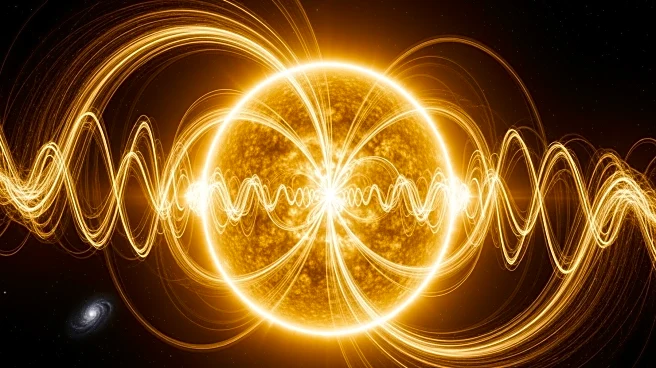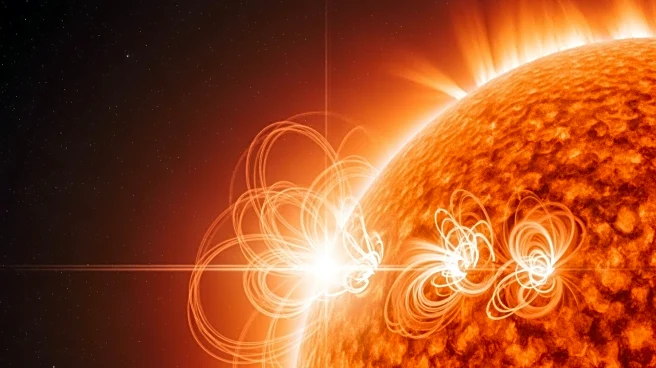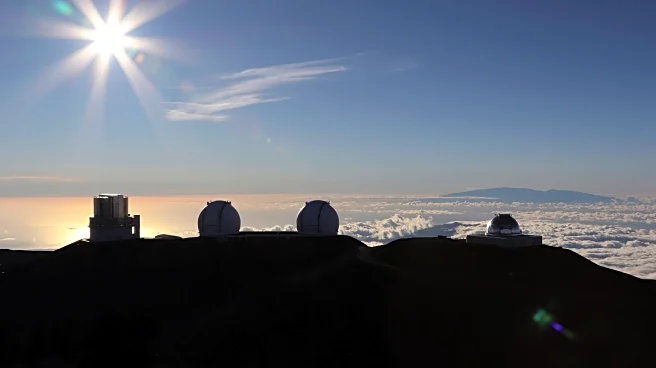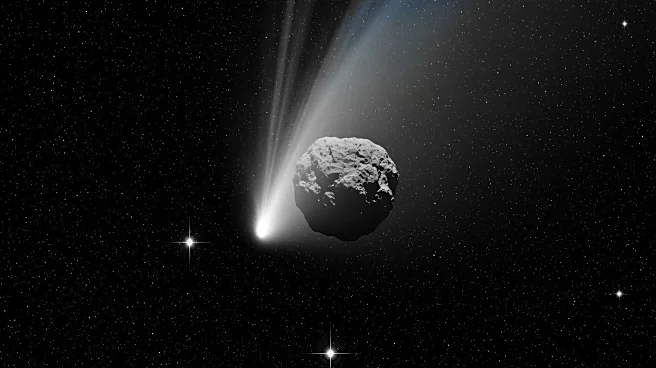What's Happening?
Scientists have observed small-scale magnetic twists on the sun using the Daniel K. Inouye Solar Telescope in Hawaii. This marks the first direct evidence of torsional Alfvén waves, which are tiny twisting
magnetic motions of energy-packed plasma waves in the sun's corona. These waves were first predicted by Swedish Nobel laureate Hannes Alfvén in 1942. The discovery ends a long search for these waves, which are believed to continuously carry energy from the sun's surface into its atmosphere, heating the corona to temperatures far hotter than the sun's visible surface. The research team, led by Richard Morton from Northumbria University, used high-resolution images from the telescope to detect these waves, which twist the sun's magnetic field lines like a corkscrew.
Why It's Important?
This discovery is significant as it provides crucial confirmation for theoretical models about how magnetic turbulence carries and dissipates energy in the sun's upper atmosphere. Understanding these processes is vital for comprehending the solar wind and the heating of the corona, which can impact space weather and, consequently, satellite operations and communications on Earth. The ability to observe these waves directly allows scientists to test and refine their models, potentially leading to better predictions of solar activity and its effects on Earth.
What's Next?
The detection of torsional Alfvén waves opens new avenues for research into how these waves propagate and dissipate energy in the sun's corona. Future studies may focus on the role these waves play in solar phenomena and their potential impact on space weather. Continued observations with the Inouye Solar Telescope and other instruments will likely enhance our understanding of the sun's magnetic dynamics and their broader implications.
Beyond the Headlines
The discovery of these waves also highlights the importance of advanced observational technology in astrophysics. The Inouye Solar Telescope's ability to capture high-resolution images of the sun's corona is a testament to the advancements in solar observation techniques. This could lead to further breakthroughs in understanding not only the sun but also other stars with similar magnetic activities.













